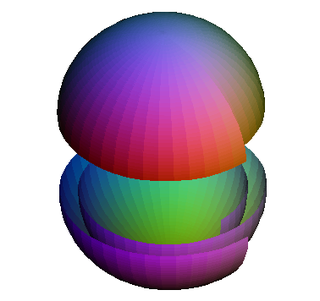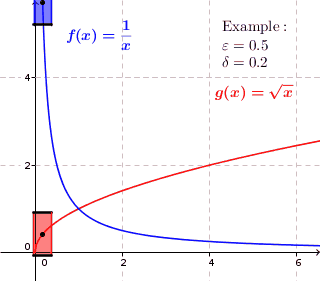 W
WIn mathematics, the blancmange curve is a self-affine curve constructible by midpoint subdivision. It is also known as the Takagi curve, after Teiji Takagi who described it in 1901, or as the Takagi–Landsberg curve, a generalization of the curve named after Takagi and Georg Landsberg. The name blancmange comes from its resemblance to a pudding of the same name. It is a special case of the more general de Rham curve; see also fractal curve.
 W
WIn mathematics, the continuous wavelet transform (CWT) is a formal tool that provides an overcomplete representation of a signal by letting the translation and scale parameter of the wavelets vary continuously.
 W
WIn topology, the degree of a continuous mapping between two compact oriented manifolds of the same dimension is a number that represents the number of times that the domain manifold wraps around the range manifold under the mapping. The degree is always an integer, but may be positive or negative depending on the orientations.
 W
WIn topology, a branch of mathematics, two continuous functions from one topological space to another are called homotopic if one can be "continuously deformed" into the other, such a deformation being called a homotopy between the two functions. A notable use of homotopy is the definition of homotopy groups and cohomotopy groups, important invariants in algebraic topology.
 W
WIn mathematical analysis, the intermediate value theorem states that if f is a continuous function whose domain contains the interval [a, b], then it takes on any given value between f(a) and f(b) at some point within the interval.
 W
WIn mathematics, the Minkowski question-mark function denoted by ?(x), is a function possessing various unusual fractal properties, defined by Hermann Minkowski. It maps quadratic irrationals to rational numbers on the unit interval, via an expression relating the continued fraction expansions of the quadratics to the binary expansions of the rationals, given by Arnaud Denjoy in 1938. In addition, it maps rational numbers to dyadic rationals, as can be seen by a recursive definition closely related to the Stern–Brocot tree.
In geometry, the Peano curve is the first example of a space-filling curve to be discovered, by Giuseppe Peano in 1890. Peano's curve is a surjective, continuous function from the unit interval onto the unit square, however it is not injective. Peano was motivated by an earlier result of Georg Cantor that these two sets have the same cardinality. Because of this example, some authors use the phrase "Peano curve" to refer more generally to any space-filling curve.
 W
WIn the mathematical field of numerical analysis, Runge's phenomenon is a problem of oscillation at the edges of an interval that occurs when using polynomial interpolation with polynomials of high degree over a set of equispaced interpolation points. It was discovered by Carl David Tolmé Runge (1901) when exploring the behavior of errors when using polynomial interpolation to approximate certain functions. The discovery was important because it shows that going to higher degrees does not always improve accuracy. The phenomenon is similar to the Gibbs phenomenon in Fourier series approximations.
 W
WIn mathematics, a function f is uniformly continuous if, roughly speaking, it is possible to guarantee that f(x) and f(y) be as close to each other as we please by requiring only that x and y are sufficiently close to each other; unlike ordinary continuity, where the maximum distance between f(x) and f(y) may depend on x and y themselves.
 W
WIn mathematics, the Weierstrass function is an example of a real-valued function that is continuous everywhere but differentiable nowhere. It is an example of a fractal curve. It is named after its discoverer Karl Weierstrass.